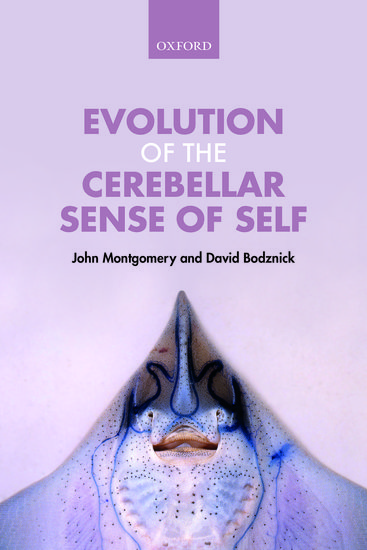Could the cerebellum be just about the most charismatic part of the brain? Its name, ‘little brain’ in Latin, has an appeal and its compact structure must endear it to under- graduate students of Neuroscience and Neurology used to contending with so many tortuous pathways! And more than this, it is the cerebellum’s elegant and consistent functional circuitry that we usually get to know as students, ahead of any other brain circuit. And we learn to correlate models of cerebellar function with clinical impairments: this analysis is more sophisticated than the analysis of plain weakness or numbness, without being too abstruse. It is no accident that drawing the circuitry of the cerebellum was pivotal to Ramon y Cahal’s realisation that neurons are not continuous but contiguous, which is the foundation of the Neuron Doctrine.
So, we can all agree that the cerebellum is great. How about this book?
Well, it’s clearly not a must for the exit exam, or for the busy clinician in need of an update on the SCAs. But I liked it. And that’s no small praise from a clinician for a Basic Science tome. In fairness, as tomes go, the book is quite light. I would recommend it particularly for clinicians feeling nostalgic for their preclinical Neuroscience studies!
First of all, it has an engaging picture of a ray on its cover; rays and sharks are big as animal models of cerebellar function, it seems. Although I did not find any mention of a deliberate link, the image reminded me of that iconic 18th century still life painting in the Louvre by Chardin ‘The Ray’, a painting imbued with existential angst (more than a century before Sartre et al) and far from irrelevant to this volume’s philosophical and scientific content.
Montgomery and Bodznick give us a sequence of chapters on aspects of cerebellar function – the cerebellum and ‘sense of agency’, the cerebellum as a neuronal machine, the workings of specific cerebellar reflexes and so on. Perhaps unsurprisingly for the semi-detached neuroscientist (which condition, as clinicians, we must resign ourselves to be in), the introductory and concluding chapters were the most appealing. The more ‘involved’ middle sections, I’m sure, would have given greater satisfaction on repeated reading!
For me, the key message of the text is that the neural processing in the cerebellum permits an animal to distinguish between self-generated movements (and self-generated electrical field changes), on the one hand, and those that are externally generated on the other. Such processing is obviously linked to vestibular and somatosensory proprioceptive projections to the cerebellum (the vestibulocerebellum and spinocerebellum). In turn, this might allow a ‘sense of agency’, an idea of one’s own actions or intent. Do you see where the sense of self might come in? And it is not too big a jump to consider impairment of that sense of agency contributing to disordered thoughts, and indeed fragmentation of the self, in mental health disorder.
My one criticism of the flow of their argument is that very little attention is given to the huge cerebrocerebellar projections of the human brain (as distinct from the vestibulocerebellar or spinocerebellar functions). I understand that such discussion would have been highly conjectural and ‘unburdened by fact’, but it would have added to the ‘story’, at least to the self-confessed semi-detached neuroscientist clinician-reader.
The chapter on the history of cerebellar research was an excellent read for the generalist. Cerebellar science makes a good case study! I enjoyed especially the authors’ treatment of philosophical-scientific progress made by the giants John Eccles and Karl Popper, and others. I had not previously heard of Science being distinguished from other domains of study by its ‘epistemological efficiency’. That is, that science builds up new knowledge more efficiently (problems > theories > criticisms > new problems) than other scholarly disciplines – a robust and measured analysis of what science can and cannot offer. In the same chapter, I found their treatment of the anelectrotonus concept (vaguely corresponding with hyperpolarisation) a bit laboured.
In the final chapter, it is suggested that some form of future robotic circuitry might be inspired by the circuitry of the cerebellum. For a clinician, it was a thrill to perceive for the first time the parallels between robotic movements and some forms of ataxia. I trust, however, that we are some way off robots whose moves are cerebellum-smooth, and some way off robots with a cerebellar ‘sense of self’.
